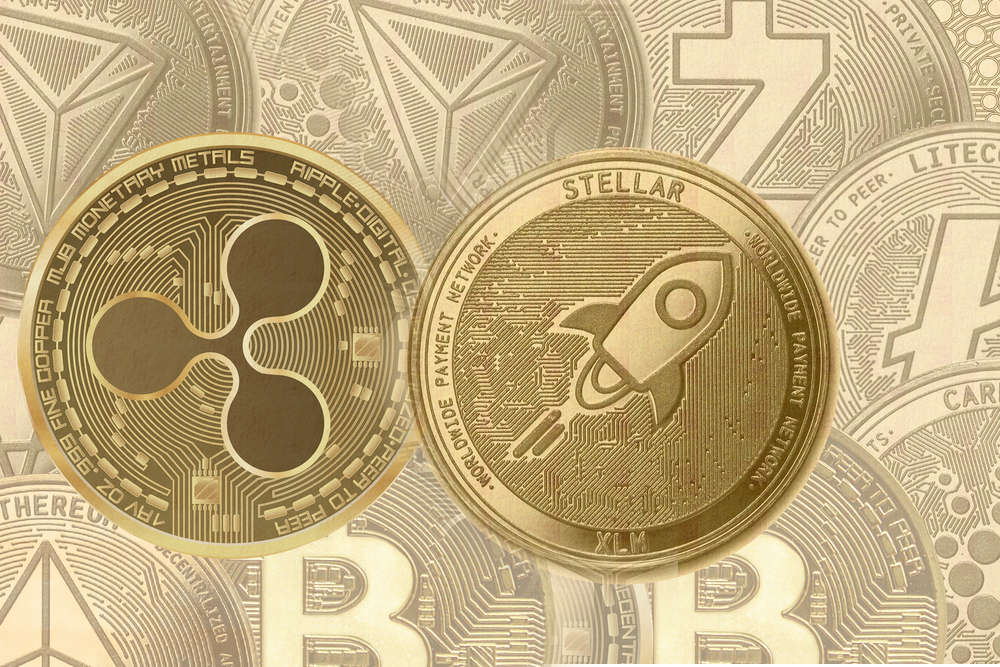Remittances are one of the most important incomes for some countries, especially in Latin America. Developers do not want to lose that business opportunity; thus, they employ blockchain and cryptocurrencies.
But what would be the benefits for us, the users? We have two main ones at the moment: faster transactions (from days to minutes or seconds) and lower commissions than traditional channels such as banks.
The battle we present today is Stellar Lumens (XLM), a project that is very well seen by investors, and on the other side of the ring is Ripple (XRP) which is the most criticized project by the crypto community, staying in the top 10 coins by market capitalization.
The battle of both is for mass adoption, low transaction costs and transfer speed. Who will win the battle? Let’s see the advantages and disadvantages of each one and then we are going to determine who is the winner.
What is Stellar?
This protocol was founded in 2014 by Jed McCaleb (Co-Founder of Ripple), Joyce Kim (renowned lawyer), and Patrick Collison (CEO of Stripe). The project is aimed to be a payment intermediary that facilitates sending money.
With XLM, users will be able to transfer money quickly without worrying about the high commissions or limitations that are established by banks. Therefore, this is a protocol that is ideal for sending remittances, payment of foreign suppliers or freelancers.
People believe that Stellar is a fork of Ripple, but this was denied by its founders, demonstrating they are a project of another generation of payment, and their platform is totally different from XRP.
Advantages of Stellar
This project has captured the attention of many investors for more than a year due to its incredible competitive advantages, which we highlight below.
- Proof of Stake: this protocol does not require computing equipment, so lovers of the environment will not criticize it.
- It has renowned investors: we can highlight IBM and Samsung.
- Transactions: current capacity of two thousand per second, and they are working to support ten thousand.
- Cost per transaction is almost non-existent: fees are barely 0.00001 XLM, and with the current value of the token, it is imperceptible.
- Security: it has one of the best security protocols to prevent hacking and DoS attacks.
Disadvantages of Stellar
- It’s not fully decentralized: a high quantity of tokens are owned by the project’s developers.
- People linked them with Ripple: this could have an impact on the money they receive from investors.
What is Ripple?
It was born in 2011 by the company Ripple Labs. In 2016, the New York Department of Services gave license to the virtual currency project, and in 2017, they achieved an alliance with one of the largest Spanish banking institutions, such as BBVA.
XRP has an impressive technology that aims to improve the current financial system, allowing you to carry out interbank transactions quickly and at meager costs. It is beneficial for those users who make multiple payments through cryptocurrencies.
Advantages of Ripple
- High process capacity: 1500 transactions per second, and these transactions are validated in just 4 seconds. This is due to its scalability and centralization system.
- It is accepted by banks: this is due to their alliances and for its purpose, which is to support the banking system and the current financial system. This does not happen with other cryptocurrencies since the others seek to overcome the current financial system by a decentralized one.
- Market capitalization: it is ranking in the top 10 of most important coins.
Disadvantages of Ripple
- Bad reputation: The fact that it’s a centralized project with a different vision from other cryptocurrencies made it lose credibility from the crypto community.
- They are blocked from various exchanges: reducing the places where tokens can be acquired.
- A fairly large supply: Ripple Labs can increase its supply and today. Anybody knows the criteria to increase the number of tokens.
- The lawsuit by SEC: the case is opened waiting for resolution.
Main differences between each project
- Ripple is aimed at renowned banking institutions, and Stellar is intended for small investors, which is why it seeks massive use by people.
- The company behind Stellar is a non-profit foundation, while Ripple is the opposite.
- They use different protocols to function.
- Ripple’s supply doubles Stellar.
Conclusion: who wins the battle?
Cryptocurrency remittance companies are serving individuals and businesses around the world and have gained recognition within mainstream Fintech.
Blockchain-based companies are solving problems of remittances, which have been characterized by exorbitant commissions and long settlement times. These companies allow fast, safe, and economical money transfers using XLM and XRP networks.
Considering the large number of people who send and receive money, fintech companies have a high potential to take a big step towards introducing blockchain and cryptocurrencies to a large number of individuals.
In this case, the winner is the Stellar Lumen project. They are getting big-name investors in a short time, increasing their capitalization in a surprising way, along with utilizing incredible technology.
One of the obvious winning factors for XLM is because XRP is currently filing a legal case by the SEC.
Remember that the investments you make are under your responsibility, and the information we bring you is for educational purposes.
